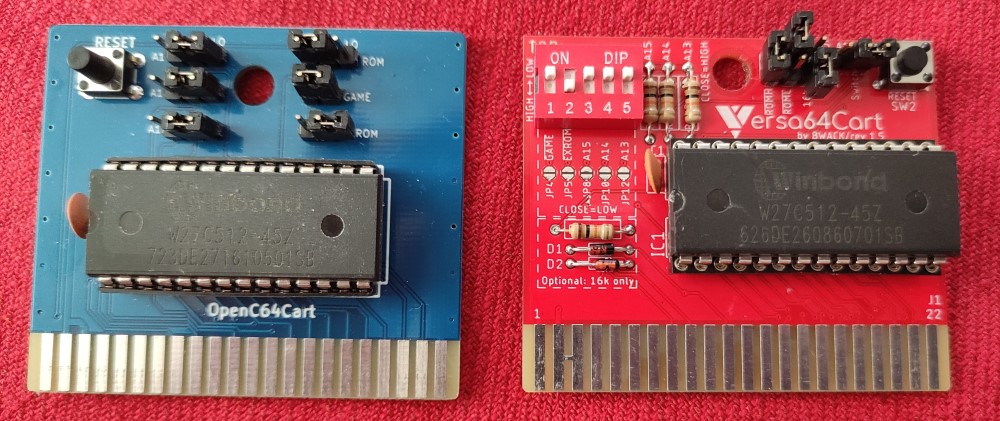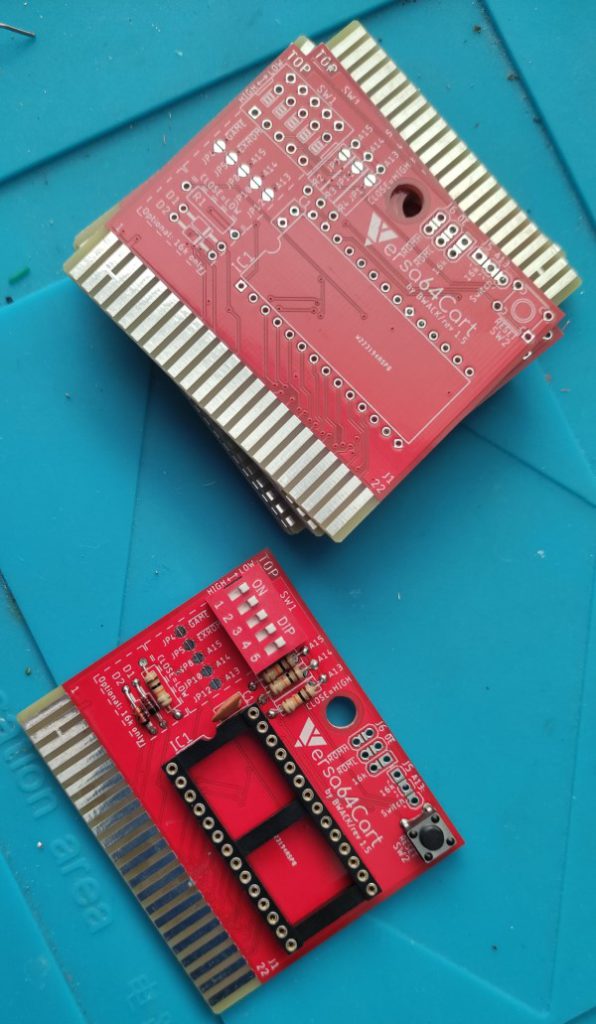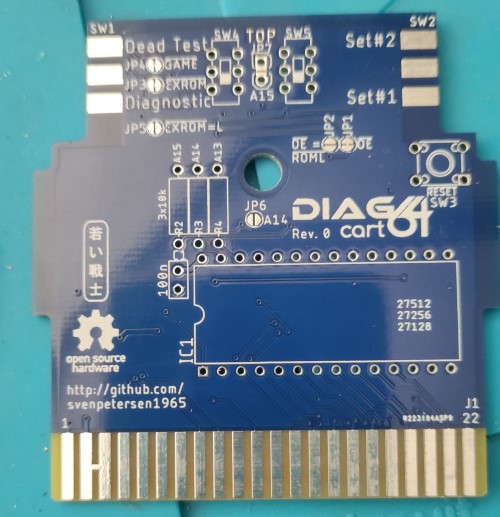
Diagnostics cards are an essential weapon in the retro fixers toolkit. I have quite a few different diagnostics cards for the ZX Spectrum (having fixed quite a few now), and they have been essential; as well as my oscilloscope – but that’s a different blog.
OpenC64Cart
The first card I built was an ‘OpenC64Cart‘. I bought it from eBay without really checking out any information on the card – it was cheap. It was easy to build and works fine 🙂 It’s a basic card and only supports 8KB cartridge images. I currently have it configured with ‘Dead test’ and ‘Diagnostics’, but there is space for another 6 ROM images on the Winbond W27C512 EEPROM if I want others. The only minor issue I have with the card is the fiddly jumpers that need to be set to switch the ROM types.
Versa64Cart
Next, I decided to order a couple of different PCBs from PCBWay. After some research, I selected the Versa64Cart and the Diag64 cart (a derivative of the first). I ordered 10 of each to combine postage and waited for them to arrive from China.

Again, the Versa64Cart was easy to build, although the mini pads on the reverse made soldering a little trickier. The cart has more features, supporting both 8KB and 16KB – and looks good in red 🙂 In use, the dip switches make changing the card type a little easier and the addition of solder bridge pads allows the card to be permanently set up to a specific configuration.
Diag64Cart
The final card was a Diag64Cart. This is a derivative of the Versa64Cart specifically designed to use with diagnostics ROMs; like the Open64Cart this one only supports 8KB ROMs.

The key feature of this PCB is that it is designed to fit inside a couple of standard cheap cases and is specifically designed to run diagnostics software like like Dead Test Rev. 781220 and Diagnostic Rev. 586220.
Conclusions
So far I have only tried the OpenC64Cart in my broken C64 and it works fine. I have made a Versa64Cart and it looks like it might be my new favorite, but only due to its use of DIP switches for easy configuration (I doubt I will use the 16KB ROM feature – but you never know).
I’ll update this blog when I have tried the other two…….to be continued….
